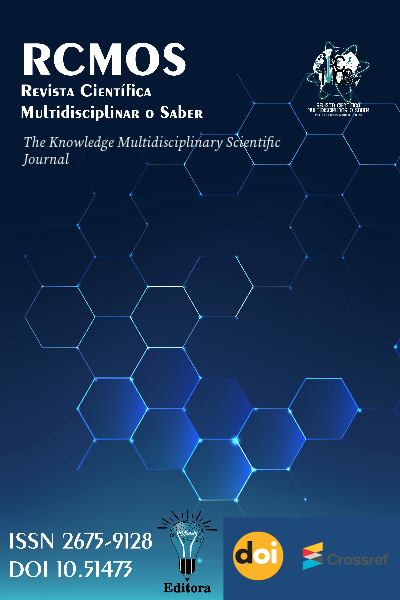Vertical and Horizontal Integration in the Supply Chain: Impacts on Operational Resilience
Vertical and Horizontal Integration in the Supply Chain: Impacts on Operational Resilience
DOI:
https://doi.org/10.51473/rcmos.v1i1.2024.1418Keywords:
vertical integration; horizontal integration; supply chain; operational resilience; governance; transaction costs.Abstract
This article investigates how vertical (upstream and downstream) and horizontal (between peers or adjacent sectors) integration strategies influence the operational resilience of supply chains in highly volatile contexts. Based on the foundations of transaction cost economics and the resource-based view, combined with the literature on operations management and business continuity, we propose an analytical framework that relates governance structure (make-or-buy, alliances, and mergers), network architecture (centrality, redundancy, and modularity), and response practices.(visibility, flexibility, buffers, and substitutability) to robustness, agility, and resilience metrics (MTTR, service level, fill rate, and backlog clearing). The findings indicate that vertical integration increases control, coordination, and capacity prioritization, reducing the risk of disruption in critical inputs, while horizontal integration expands scope, economies of scale, and capacity sharing, accelerating reconfiguration in the face of shocks. However, adverse effects, such as rigidity, risk concentration, lock-in, and loss of optionality, emerge when integration occurs without dynamic viability criteria and adaptive governance. The study synthesizes evidence and presents guidelines for organizational design, investment criteria, and resilience assessment in complex supply chains.
Downloads
References
CHANDLER, A. D. The Visible Hand: The Managerial Revolution in American Business. Cambridge, MA: Harvard University Press, 1977.
CHOPRA, S.; MEINDL, P. Supply Chain Management: Strategy, Planning, and Operation. 6. ed. Boston: Pearson, 2016.
CHRISTOPHER, M. Logistics & Supply Chain Management. 5. ed. Harlow: Pearson, 2016.
COASE, R. H. The Nature of the Firm. Economica, v. 4, n. 16, p. 386–405, 1937. DOI: https://doi.org/10.1111/j.1468-0335.1937.tb00002.x
HOLLNAGEL, E.; WOODS, D. D.; LEVESON, N. Resilience Engineering: Concepts and Precepts. Aldershot: Ashgate, 2006.
ISO. ISO 22301:2019 — Security and resilience — Business continuity management systems — Requirements. Genebra: International Organization for Standardization, 2019.
ISO. ISO 28000:2007 — Specification for security management systems for the supply chain. Genebra: International Organization for Standardization, 2007.
IVANOV, D.; DOLGUI, A. Viability of intertwined supply networks: extending the supply chain resilience angles. International Journal of Production Research, v. 58, n. 10, p. 2904–2915, 2020. DOI: https://doi.org/10.1080/00207543.2020.1750727
PONOMAROV, S. Y.; HOLCOMB, M. C. Understanding the concept of supply chain resilience. The International Journal of Logistics Management, v. 20, n. 1, p. 124–143, 2009. DOI: https://doi.org/10.1108/09574090910954873
PORTER, M. E. Competitive Advantage: Creating and Sustaining Superior Performance. New York: Free Press, 1985.
RITCHIE, B.; ZSIDISIN, G. A. (org.). Supply Chain Risk: A Handbook of Assessment, Management, and Performance. New York: Springer, 2009. DOI: https://doi.org/10.1007/978-0-387-79934-6
SHEFFI, Y. The Resilient Enterprise: Overcoming Vulnerability for Competitive Advantage. Cambridge, MA: MIT Press, 2005.
SHEFFI, Y. The Power of Resilience: How the Best Companies Manage the Unexpected. Cambridge, MA: MIT Press, 2015. DOI: https://doi.org/10.7551/mitpress/9780262029797.001.0001
SIMCHI-LEVI, D.; KAMINSKY, P.; SIMCHI-LEVI, E. Designing and Managing the Supply Chain: Concepts, Strategies and Case Studies. 3. ed. Boston: McGraw-Hill/Irwin, 2008.
TANG, C. S. Perspectives in supply chain risk management. International Journal of Production Economics, v. 103, p. 451–488, 2006. DOI: https://doi.org/10.1016/j.ijpe.2005.12.006
TEECE, D. J. Profiting from technological innovation: Implications for integration, collaboration, licensing and public policy. Research Policy, v. 15, n. 6, p. 285–305, 1986. DOI: https://doi.org/10.1016/0048-7333(86)90027-2
WILLIAMSON, O. E. The Economic Institutions of Capitalism: Firms, Markets, Relational Contracting. New York: Free Press, 1985.
ZHANG, D.; SIMCHI-LEVI, D. Quantifying the bullwhip effect in a multiple-echelon supply chain. Operations Research, v. 58, n. 2, p. 454–470, 2010.
Downloads
Additional Files
Published
Issue
Section
Categories
License
Copyright (c) 2024 Ivan de Matos (Autor)

This work is licensed under a Creative Commons Attribution 4.0 International License.












